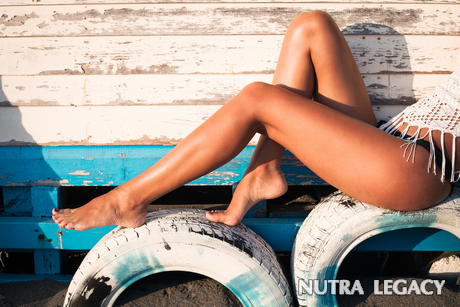Women Have Higher Risk of Varicose Veins Development
In this article you will learn

- What are varicose veins?
- How do varicose veins form?
- What are the risk factors?
Varicose veins are veins that have become abnormally enlarged. They often stand out because of their size and color. They can be blue, dark purple or flesh-colored, and often bulge or protrude from the skin in twisted masses. They are most likely to appear on the inside of the legs or on the backs of the calves. Varicose veins are more common in women than in men. There are a number of symptoms associated with varicose veins, including leg pain.
Hemorrhoids are a form of varicose veins that form in the area around the anus and/or the vagina. They are particularly common during pregnancy.
Smaller varicose veins are sometimes known as spider veins. They usually appear closer to the surface of the skin and are red or blue in color. They have the appearance of short, jagged lines and may look like spider webs or tree branches, hence the name. Spider veins may be seen on the face or legs and can cover small or very large areas of skin.
The heart provides nutrient-rich blood to the body. Arteries transport the blood from the heart to all parts and tissues. Veins then transport the blood back to the heart to be re-oxygenated.
Veins are equipped with valves that ensure blood only travels toward the heart, which prevents blood from flowing backward. If one of these valves weakens, blood may leak back into the vein. This would allow the blood to collect there and result in a condition known as venous insufficiency. As blood pools in the vein, the vein enlarges, resulting in a varicose vein.
Spider veins may also be the result of a blood backup. They may also be caused by genetic factors, hormone changes or sun exposure.
Varicose veins and vein problems in general are more common among women than men, though this is not to say that men do not share in this experience. Approximately 40 to 45 percent of American men suffer from some form of vein problem. The figure is between 50 to 55 percent for American women. Varicose veins are also more common among the elderly, affecting 1 in 2 people over the age of 50.
Many factors affect your likelihood of developing spider veins or varicose veins. Some of these include:
1. Genetics. Inherited factors such as having close family members with vein problems can increase your risk. It’s also possible to be born with weak vein valves.
2. Age. As age increases, so does the risk of developing varicose veins.
3. Hormonal changes. This can be due to pregnancy or menopause. Medication containing estrogen and progesterone (as found in birth control medication) may also increase your risk.
4. Pregnancy. This increases the volume of blood in the body and can cause enlarged veins. The uterus also expands, putting increased pressure on the veins. Varicose veins usually begin to improve around three months after delivery. Varicose veins may become a greater problem, however, with each additional pregnancy.
5. Obesity.
6. Leg Injury.
7. Prolonged standing.
8. Sun exposure. This can cause spider veins, particularly in the cheeks and/or nose of fair-skinned people.
Varicose veins can be difficult to deal with, though treatments are available. It’s always best to speak with your doctor or healthcare professional for the best advice on how to deal with varicose veins and spider veins.
The information supplied in this article is not to be considered as medical advice and is for educational purposes only.
|
 18 Jul 2009 18 Jul 2009 |

I'm wondering why it is that women are more prone to varicose veins than men? Maybe it's because of the clothes and high heels we wear?January 30th, 2011 at 10:38 am
I'm wondering why it is that women are more prone to varicose veins than men? Maybe it's because of the clothes and high heels we wear?January 30th, 2011 at 5:38 am